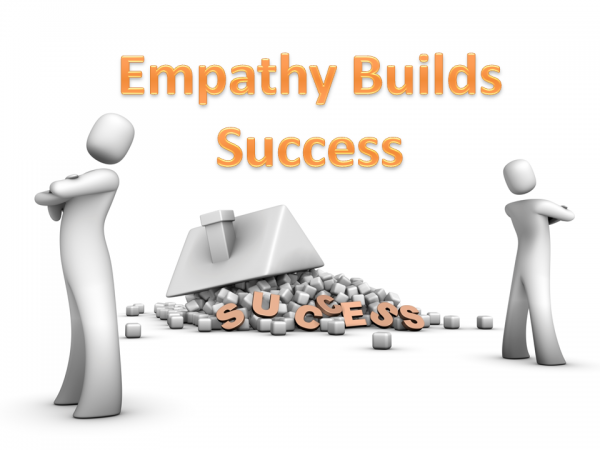 There’s no way around it. Workplace conversations transpire every second of every day. Without them, business would screech to a halt. Conversations occur in many forms – leaders coaching team members, team members crossing departments and asking for help, customers calling customer service. At TIGERS Success Series, we believe that communication that resonates with trust, interdependence, genuineness, empathy, risk and success promotes healthy workplace behavior. Because in all of these scenarios, conflicts resolve, people learn more about one another and and employees grow to become more engaged and accomplished. Without effective communication, teams and entire organizations suffer.
There’s no way around it. Workplace conversations transpire every second of every day. Without them, business would screech to a halt. Conversations occur in many forms – leaders coaching team members, team members crossing departments and asking for help, customers calling customer service. At TIGERS Success Series, we believe that communication that resonates with trust, interdependence, genuineness, empathy, risk and success promotes healthy workplace behavior. Because in all of these scenarios, conflicts resolve, people learn more about one another and and employees grow to become more engaged and accomplished. Without effective communication, teams and entire organizations suffer.
Here are some leadership team building strategies for leaders to promote effective communication within their organizations.
Create conscious collaboration plans with effective communication resources.
Informal collaboration and cooperation among employees may not be enough. Instead, organizations that implement conscious plans and utilize collaboration tools benefit from increased customer retention, higher employee productivity and greater employee satisfaction. To implement conscious collaboration plans within organizations, leaders should officially recognize collaboration as an important asset within the organization and utilize formal tools to promote communication between team members and departments that are collaborating.
Promote empathy and respect.
Empathy is an essential principle for effective collaboration and communication. When differences arise, understanding diverse perspectives resolves misunderstandings. This also fosters respect between all team members. Learning about differences and allowing for open and honest communication produces understanding on how important each team member is to the whole.
Promote a culture that values candid conversations.
Candid conversations can be hard to have, but they reduce risk and enhance problem solving and decision making. To be sustainable, organizations benefit from a culture that values open and candid conversations. In order to promote this type of culture, leaders must welcome feedback from employees as well as give timely feedback. Leaders who shield themselves from candid feedback are much like ostriches with their heads in the sand. While some might associate feedback with negativity, feedback that corrects issues that employees have that frustrates their success also threatens the organization’s sustainability. If an organization is suffering from a lack of candid communication, outside help may be beneficial to get the organization back on track. The TIGERS 360 Team Behavior Assessment , for example, is a survey that leaders can use to identify their team members’ strengths, as well as areas that need improvement. With multiple surveys and added support, leaders can develop a work culture that values candid conversations and promote trust, interdependence, genuineness, empathy, risk and success within their organizations.
Encourage social interactions.
Office layout plays an important role in how team members communicate. Social interactions among employees are important to foster respect and information sharing within the team. Therefore, office layout can either facilitate or frustrate effective communication. Kitchens, break rooms, private conference areas and court yards are excellent places for employees to interact. Since, some employees need quiet work spaces to work most efficiently, providing public conversation areas that do not distract working employees is critical. Create an office layout that allows individuals to work in their preferred environments while providing conversation areas to achieve the best results.
Encourage healthy debates.
No two people are going to see eye-to-eye all the time. Increase the number of your employees and the potential for differences also increases exponentially. Rather than deny the opportunity for debates, leaders should encourage healthy employee dialogue. To do so requires good ground rules. To start a healthy dialogue, emphasis on winning a conversation should be replaced with understanding. This leads to conversations that offer solutions for everyone and reduces the incidence of conflict and misunderstandings.
Effective communication facilitates collaboration among team members, which is an essential process for healthy team dynamics. To start the conversation and promote healthy workplace communication, leaders benefit from creating a conscious collaboration plan, promoting empathy and respect, building a culture that values candid conversations, encouraging social interaction and facilitating healthy debates and dialogue among team members.
Here are some additional resources that add to this discussion:
- 3 Measurable Ways Collaboration Grows Businesses
- 3 Steps to Happy Collaboration Between Your Engineering and Business Team
- Create a Culture Where Difficult Conversations Aren’t So Hard
- How to Set Up Your Workplace for Successful Collaboration
- 7 Ways Amazing Leaders Encourage Healthy Debate
Copyright TIGERS Success Series, Inc. by Dianne Crampton
 About TIGERS Success Series, Inc.
About TIGERS Success Series, Inc.
TIGERS® Success Series is a Bend, Oregon Leadership and Team Improvement Consultant that helps committed leaders build more cooperation among employees and collaboration between departments for improved growth, revenue, purpose and impact.
We do this by deploying the TIGERS team process that improves workforce behaviors that are anchored by trust, interdependence, genuineness, empathy, risk resolution and success. Providing diagnostics and customized team interventions, you can improve both work culture and transform your adequate teams into exceptional ones.
We also license and train HRD Executives, Project Managers, Managers, Trainers and Team Consultants in the use of our award winning resources. For more information, call 1+ 541-385-7465.
Promoting cooperation in the workplace is a fantastic way to increase employee morale and productivity, so it is nice to get some tips. I particularly like that you recommend promoting empathy and respect. After all, if you can lead your employees to have a better understanding of one another they’ll get along better as well.